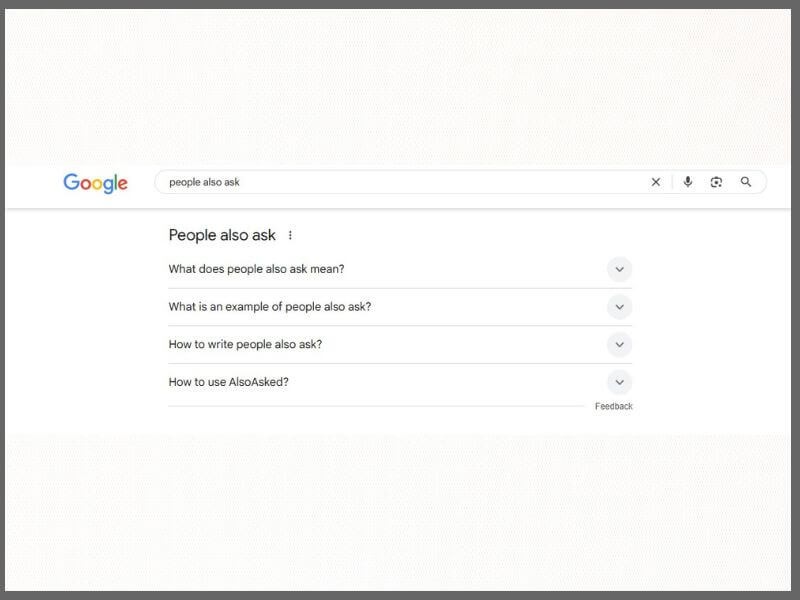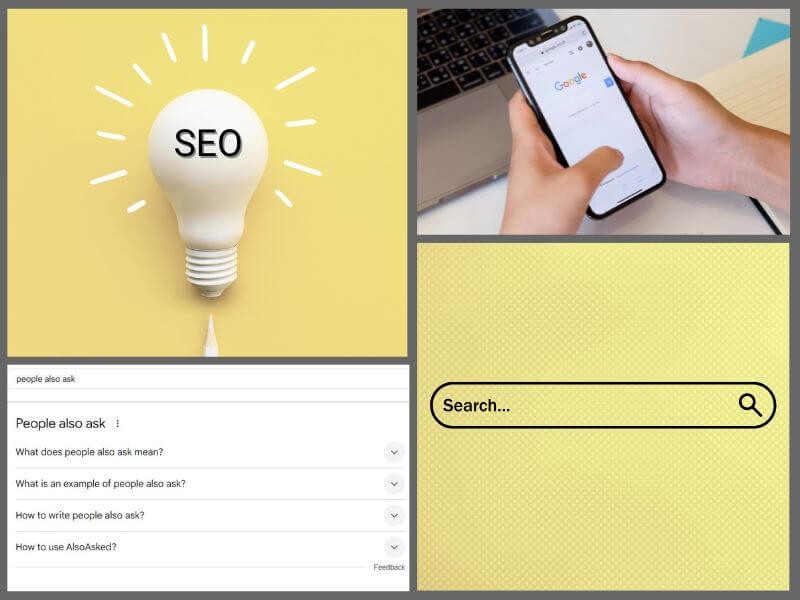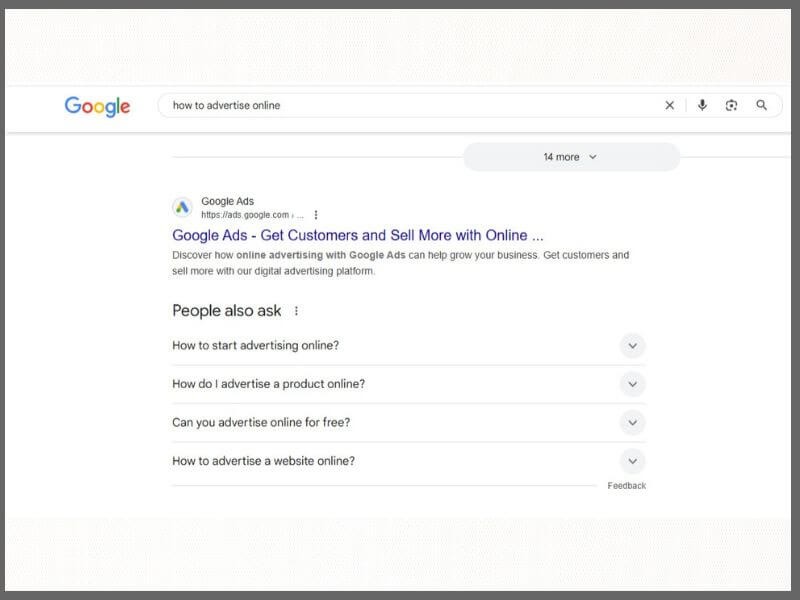
Sometimes you don’t need much—not a new blog or a more expensive tool. It’s enough to know what people are really searching for on Google and how to respond to that. If you’ve ever seen the additional questions section “People Also Ask,” you’ve already found one of the most useful sources of ideas for SEO content. If you write for people, let people guide you…
Surely you’ve asked Google something or searched for a topic you’re interested in, and you noticed the “People Also Ask” (PAA) section - a list of additional questions that appears below the first few results.
People Also Ask offers answers to questions that others are also asking related to the topic being searched.
If you know how to pull information from that part of Google and include it in your content, you can increase your organic visibility and CTR (click-through rate), that is, the number of clicks on your content.
How do you find the right questions? Where and how do you include them in your content? Why should you use exactly this approach to rank better on Google?

When you search for something on Google, you’ll often see a small list of additional questions below the top results.
These are questions that other users are also asking, and Google places them there because it thinks they might interest you or help answer your query. You click on one, the answer opens, you click on another, the answer opens, and so on.
This isn’t random. Google is constantly learning from user behavior and trying to guess what might be useful to you. And that’s exactly why these questions are worth paying attention to.
If you create content for the web, PAA can help you:
PAA is the simplest way to avoid guessing. Instead of guessing what people might be interested in, you find out what they’re already searching for.
What does it look like in practice:
What will you get in return?

If you’re already using People Also Ask as part of your SEO strategy, you need to know that not every question is equally valuable or useful. Some questions are too general, some are technically incorrect, and some lead in a direction that doesn’t match your audience. That’s why it’s important to know how to filter them.
Although you can start manually, click by click, practice has shown that the best results come when you combine different sources and tools:
Start with a search
Type the basic term into Google and pay attention to the questions that appear right after the top results. By clicking on one question, Google automatically generates new ones. That way, you can see how a topic “grows” from the user’s perspective.
Note the pattern
If certain questions appear in multiple similar queries, that’s a good sign that they carry some weight. Questions that start with “how,” “what does it mean,” and “why” usually require a clear answer and are often used as subheadings in content.
Test with tools
Some tools can save you hours of work, such as:
When choosing which questions to include in your content, follow these guidelines:
If a question doesn’t help you structure your content better or doesn’t bring added value to the reader, skip it.
SEO content shouldn’t be overcrowded - every question you use should serve a purpose and contribute to increasing the page’s visibility.

When you're working on content designed to drive traffic from search engines, PAA questions are a great tool for planning, but also for understanding what your audience really wants to know.
Don’t just stick them at the end of the text. If you include them smartly, the text becomes easier to read, users will stay longer, and Google may rank you higher.
Here are a few ways you can make good use of them:
Intro paragraph as a “quick answer”
If you have a PAA question that users frequently search for, place it right after the introduction and provide a short answer. This often increases the chance that Google highlights your content in search results.
Structure based on the user's thought process
Organize the questions in a logical order, as someone exploring the topic for the first time might ask them. This makes the content easier to read and signals to Google that your content follows the natural flow of queries.
Internal link optimization using questions
If you have several pages covering related topics, PAA questions can serve as “anchors” to connect content. For example, one question links to a guide, another to a pricing page, and a third to reviews.
Content expansion in the form of a mini guide
If you’re covering several questions on one page, group them by topic. This helps readers find what they’re looking for more easily and increases the chance your page will appear for multiple different searches.
Increasing CTR through meta descriptions and titles
Some common PAA questions can be repurposed as blog titles or meta descriptions that better match the user's language. This often leads to a higher click-through rate in search results.
Content based on PAA questions is not just a list of questions and answers.
You need to write from the user's perspective and use SEO.
If your text looks like helpful content—not an ad—Google recognizes that, and users even more so.
If you’ve found questions you want to include in your content, it also matters how you integrate them.
The point isn’t just to throw them in and quickly answer them. The way those questions are phrased and addressed can impact how many people click on your content and how high Google ranks it in results.
What it looks like in practice:
The question must feel natural
If the headline starts like a real user’s question, your text is more likely to catch attention. Phrase it the way someone would actually type it into Google.
Place the answer right below
One or two sentences that get straight to the point. You can add more detail later, but the first answer must be quick and clear.
Use structure that matches the query
If the question is “How to do something?”, follow a list format (this format helps Google highlight the content as a featured snippet):
1. first step
2. second step
3. third step
Add internal links where appropriate
Don’t overdo it, but connect to other content that’s genuinely helpful for the reader. This not only builds your SEO structure, but also keeps users on the page longer.
Include an FAQ when answering multiple questions
If you have multiple PAA questions on the same page, adding an FAQ structure can help a portion of the content appear directly in search results. This often means additional lines under your link, which increases visibility and CTR.
Maintain consistent tone and style
If you started with a simple and professional tone, keep it that way throughout all responses. Both Google and users appreciate consistency.
It has been shown that pages that regularly work with PAA questions are more likely to achieve better positions on Google.
But it’s not just about ranking high. What matters more is that your content attracts the right attention because it answers what someone wants to know, right at the moment they’re searching for it.

If you want to create content that truly makes sense and drives traffic, there’s no room for guessing and assumptions.
Everything you need already exists. Google shows every day what users are interested in and how they ask questions. Now it’s your turn.
People Also Ask are real questions from real people, and that’s exactly why it’s worth starting with them.
When you include PAA questions in your content, you build search engine position, but you also gain much more:
From experience, we know that this approach consistently brings stable, organic traffic. It doesn’t depend on campaigns, it doesn’t disappear with the budget, and it won’t become outdated after two weeks.
You’re writing content, but don’t have the right audience? That can change.
Contact us. We’ll be happy to show you how to align your SEO strategy with what your audience is already searching for today.